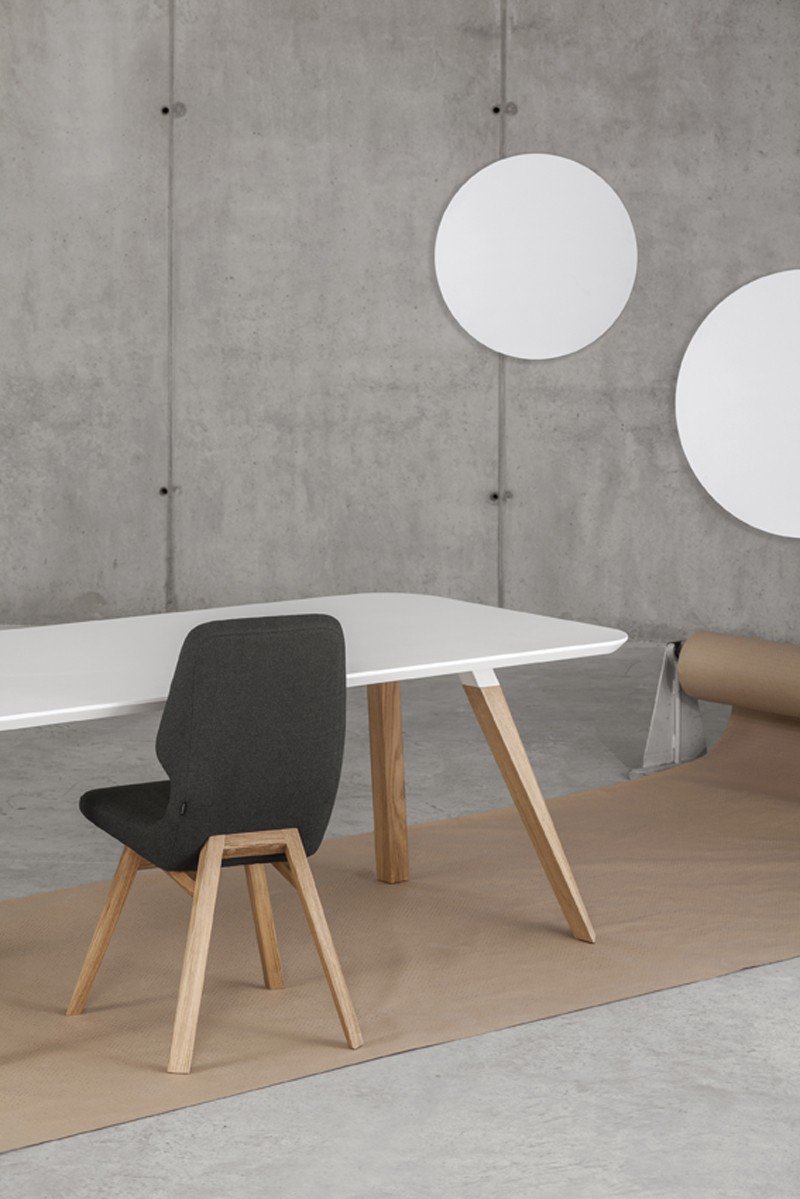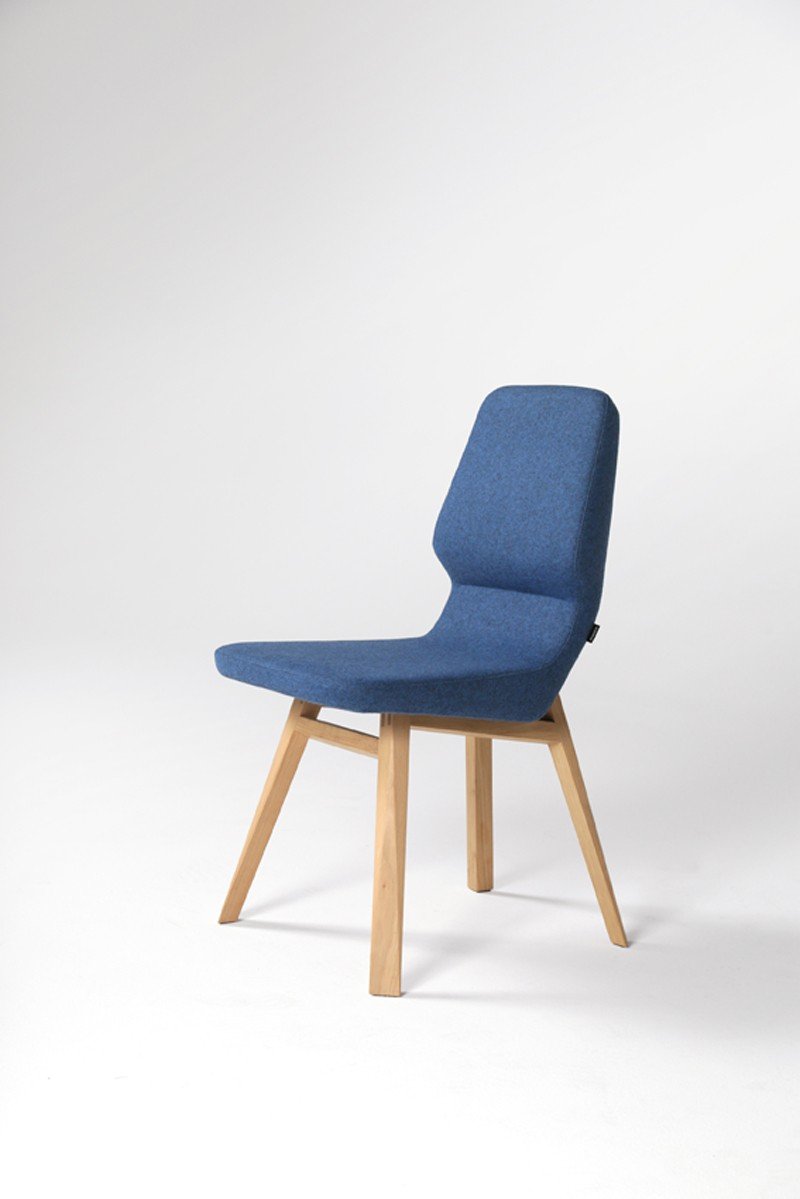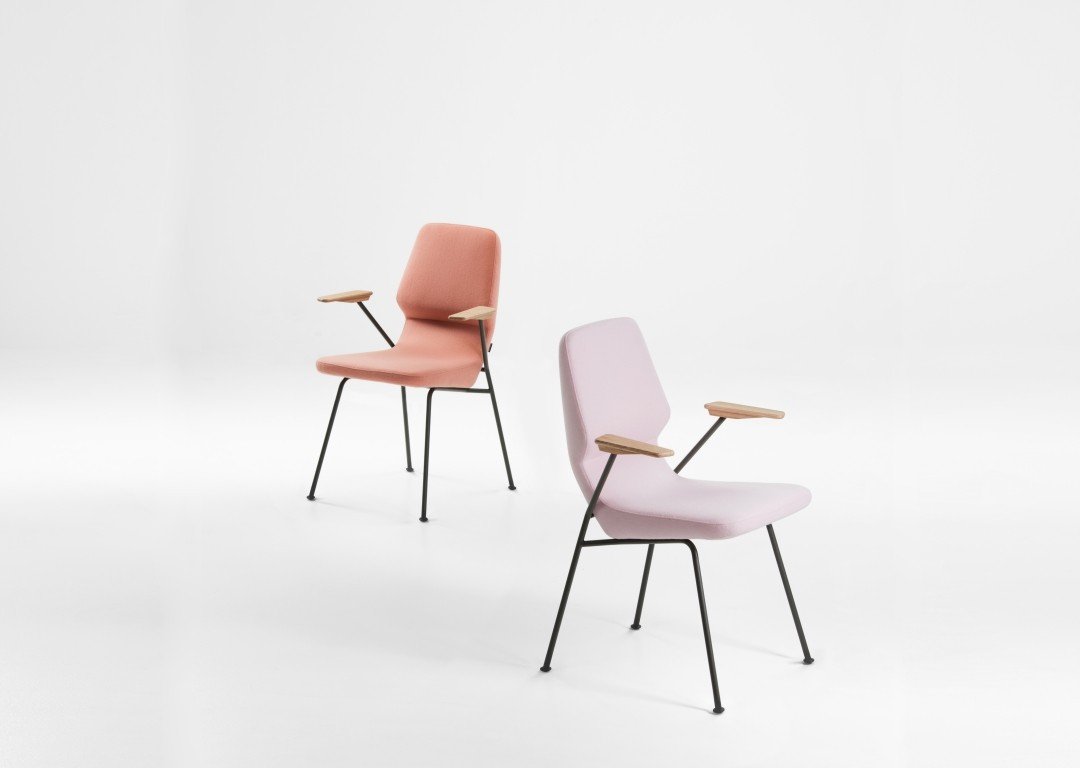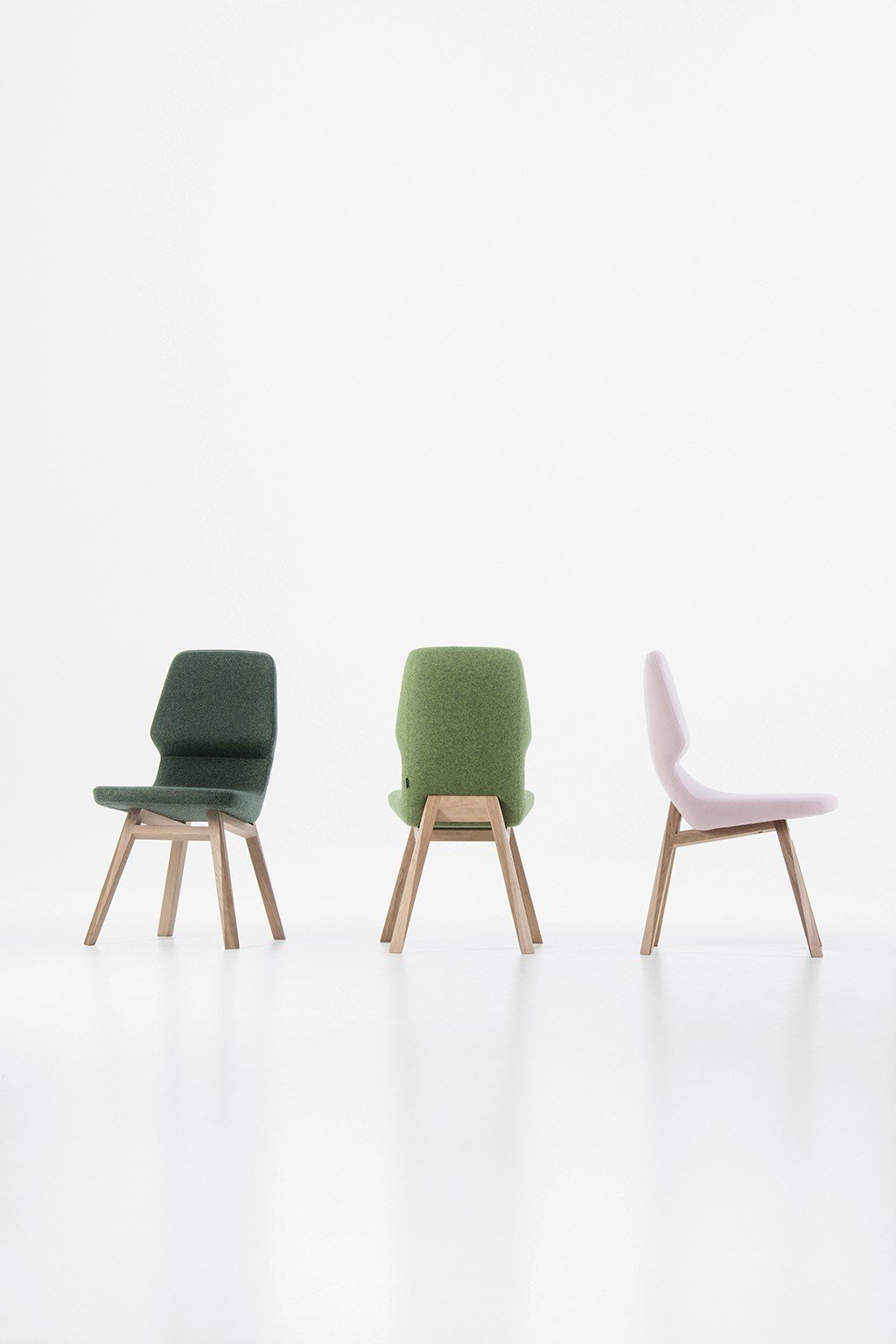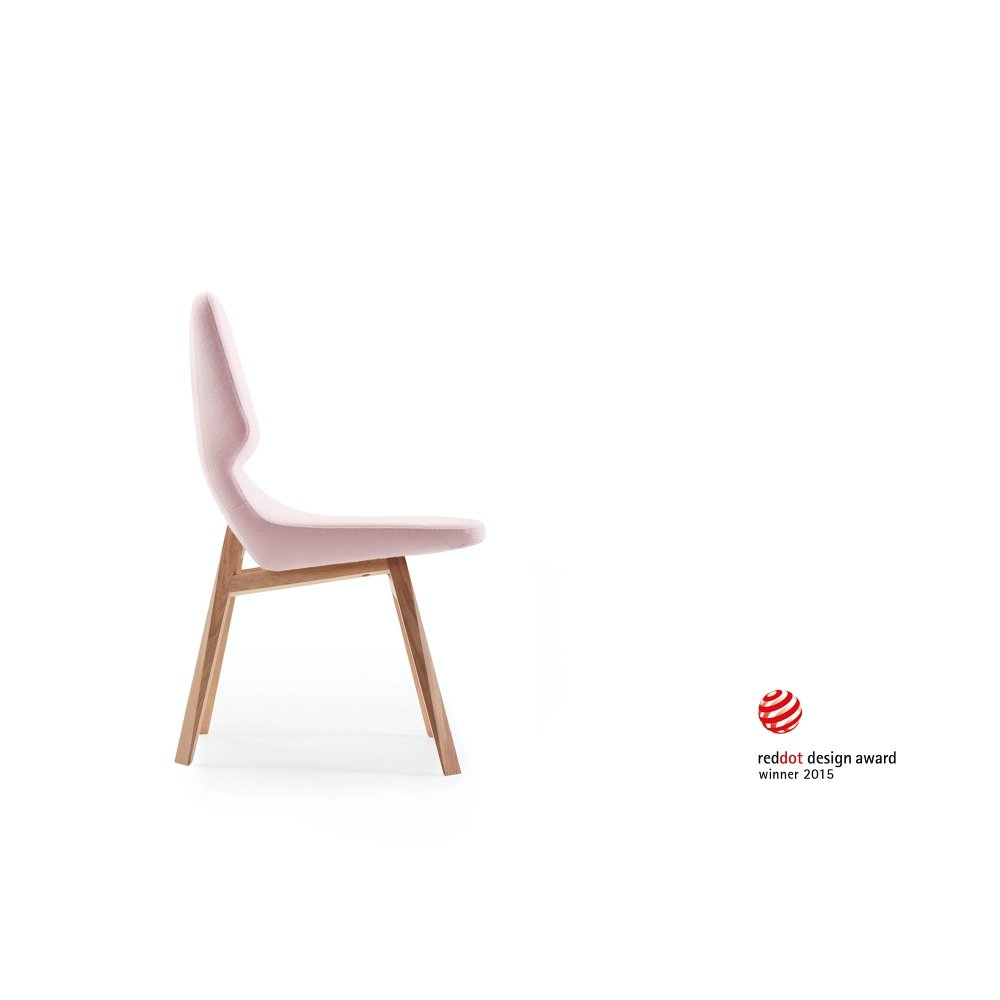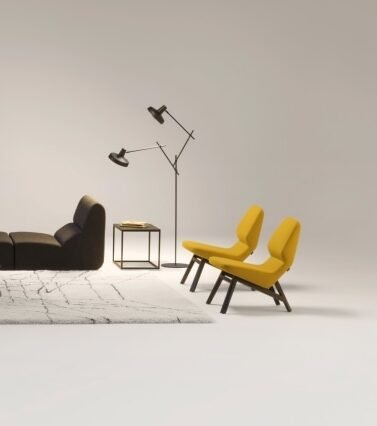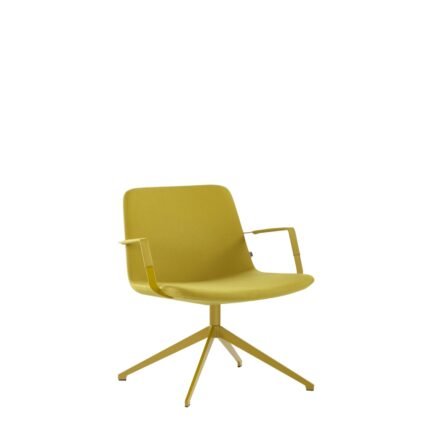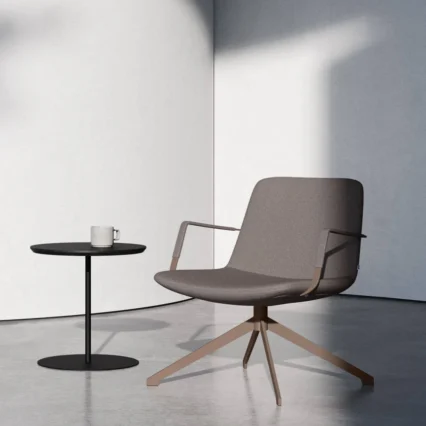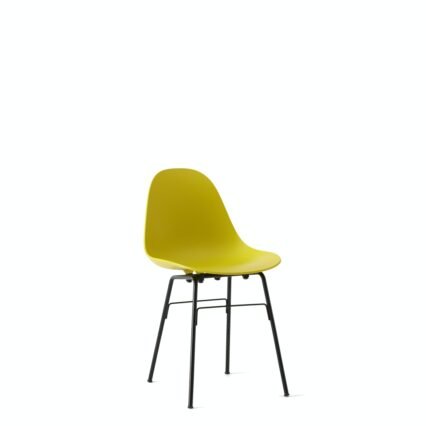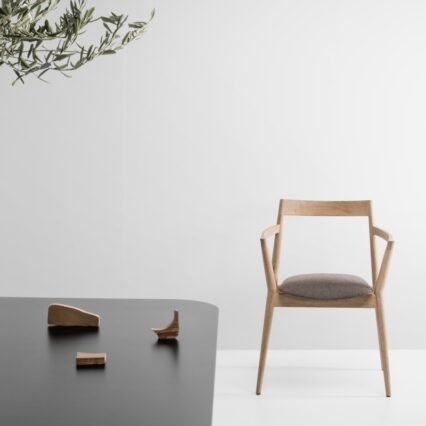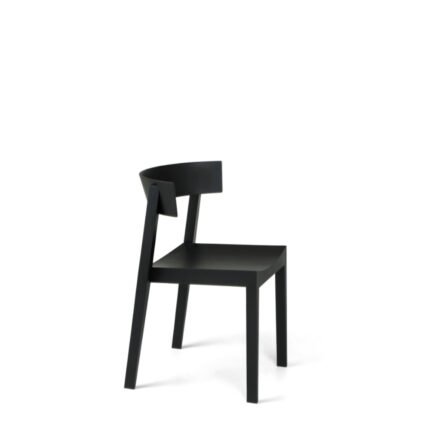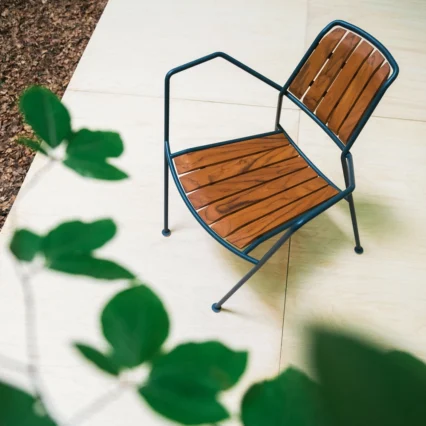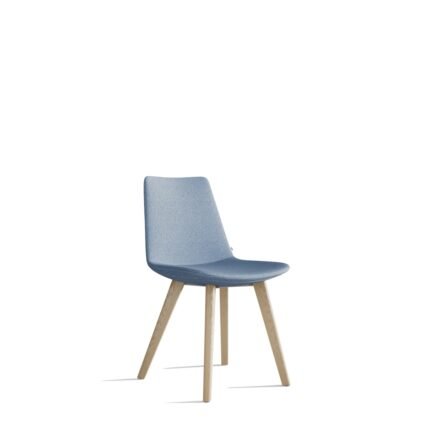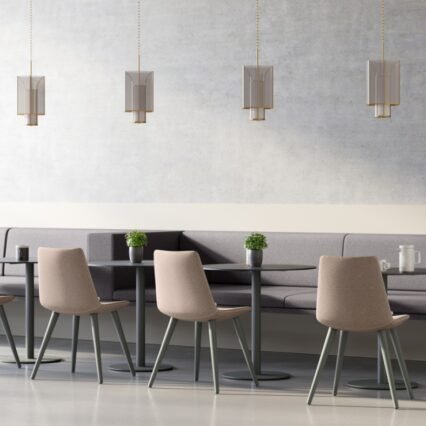Oblique Chair | By Numen/ForUse
The basis of the system is the characteristic profile of a sofa which, defined by two triangular prisms, ensures maximum foam thickness on the rear of the seat and the backseat's lumbar area. The structural veneer molding is bent around two axes and is upholstered together with the foam, resulting in a unified pulsating form. As a result of the triangulation, the solid oak legs thin towards the bottom, thus transforming the square cross-section of the top of the legs into their bases' triangle.
Oblique collection has been completed in its uniqueness. The pulsating form of an armchair on the chair has had its full affirmation, and with its reduced volume communicates in different style contexts. The character of the entire collection has been mostly expressed with the Oblique table. The specific geometry of the legs made of a massive oak in combination with the floating white tabletop in this dimension is simply perfect.
Dimensions
18"w |23" d | 35"h | 18"sh
Materials
structure: metal structure and molded polyurethane foam
frame: solid white oak // powder coated steel
upholstery: fabric or leather
+ Oblique Chair Data Sheet
+ Prostoria Standard Material Option Catalog

Numen/For Use
Numen/For Use is an internationally acclaimed design collective led by product designers Sven Jonke, Christoph Katzler, and Nikola Radeljković. For the past 20 years, the group has been active globally in the fields of industrial and spatial design, scenography, and conceptual art. Numen’s distinctive experimental vigor and an interdisciplinary approach are reflected in the variety of objects and spaces they design for Prostoria. Their visual language is consciously reduced and implicit, and their concepts are strongly based in form and formal expression, while grounded in respect for local modernist heritage and its wide societal impact. Their designs for Prostoria include Polygon, Oblique and Trifidae easy chairs, Oblikant, Bik, Dobra, and Osmo chairs, and Revolve, Layout, Absent, Segment, Combine and Fade sofas.
Prostoria
We tend to perceive furniture as something abstract, created on designers’ desks, and then produced, branded, and placed on the market by companies with different statuses and reputations. In fact, relations inside the contemporary globalized furniture industry are becoming more and more fragmented with less and less opportunity for complete dedication to synergies and collaborations… Prostoria, as a young company whose catalog already comprises some new icons such as the Polygon armchair and the Revolve transformable sofa, stands as an example of a different and more traditional approach based on the evolution from the local factuality and logical clustering of all actors involved in the production process.
The rapid development of Prostoria, formerly known as Kvadra, a company which has come a long way, from “starting from zero” to positioning itself as the leader and promoter of new ideas in only a few years time, is a story about the reintroduction of continuity both in Croatia and Central Europe, a region with vital but insufficiently recognized design scene and remarkable tradition and knowledge of the furniture industry. Those elements served as latent potentials that provided grounds for a continuation and had to be activated.
Since the beginning, Prostoria has been developing an integrative approach, functioning as a collaboration platform that nourishes and stimulates the continuous exchange of knowledge and experience between all the actors participating in the production of furniture. A dynamic workshop ambiance has been created offering opportunities mainly to young designers to explore their ideas in excellent conditions and bring them to the highest level of design, functionality, and technological artisanship. Many products have been developed over long periods of time surpassing a number of iterations until reaching their final form, which would be impossible without adequate support combining the contemporary technology and meticulous craftsmanship and handwork of the highest quality. Predominantly local materials are used, especially solid wood, and most of the production takes place within the company itself or in collaboration with local cooperatives.
While the company’s catalog also offers furniture based on tested models, Prostoria shows strategic and even passionate dedication to research-based design, convinced that authenticity has its place on the market but presents a special challenge in the times when it seems almost impossible to create truly innovative and fresh concepts. For that reason, Prostoria’s social responsibility and specific position have to be observed as a contribution to the evolution of design and readiness to take the risk in order to reach new values for the benefit of users and the culture. Thus, Prostoria stands as a project inside of which designers grow together with the company on the grounds of mutual trust and shared goals.


